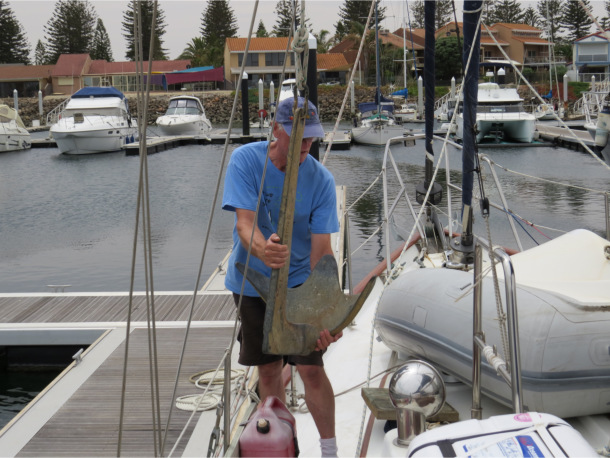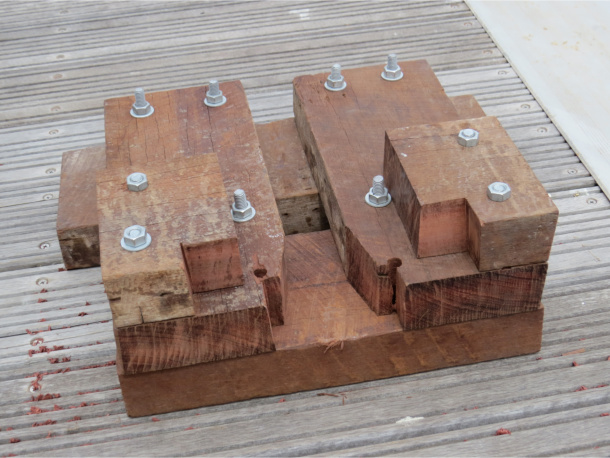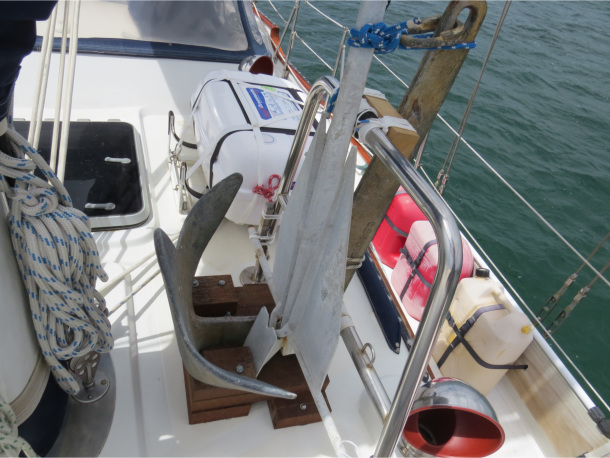Anchors Away
/One of our goals when we docked Nine of Cups at the Atlantic Yacht Basin was to raise the waterline. We offloaded hundreds of pounds of stuff destined for yard sales, thrift shops and consignment shops. No, we're not thinking of giving up our life aboard Cups any time soon, but thinning out some of the 16-year accumulation of stuff seemed prudent. Anchors seem to be a passion with David. He's even written a book about anchors. We have had six aboard for several years, and in an effort to thin down the inventory, he decided to part with two of them.
Stored on deck we have a 50 kg Bruce and a 43# Danforth. On the bow roller, we have an 80# Manson Boss which is now our primary anchor. On the aft deck, we have a 10# mushroom anchor for the dinghy. Below decks and under our bunk in the aft cabin, there's a 35# CQR and a 32# aluminum Fortress. It was a heartbreaking decision for the captain … which two would go?
The 50kg (110 lb) Bruce was our primary anchor until we reached Australia. Anchoring along the southern Australia coast is difficult. With hard sand and lots of grass, it was hard for the Bruce to dig in. We replaced it in Port Adelaide with a 80# Manson Boss. The sharp claw of the Boss has been doing a fine job ever since and fits better than the Bruce in the bow roller. David built an anchor chock on deck to store the Bruce, but after hauling it around for the past couple of years and not using it, he felt it was time to retire the old guy.

The CQR was used in the high latitudes as a series anchor with the Bruce, but we've seldom used it in recent years. It go the heave-ho, too.

We loaded both in the SUV and toted them to Lin's house hoping that they'd be sold either via Craigslist or at the yard sale. No luck. As the days in Boston dwindled and the anchors, nestled in pine needles in Lin's backyard, fought off gypsy moth advances, David reluctantly contacted Bud at Newport Nautical Supply, a well-known chandlery and consignment shop in Newport, RI and we made the trek down there with the anchors in Lin's trunk. Needless to say, the car rode much lighter on the return trip.

After offloading the anchors and bidding them adieu, we headed next door to Bishop's 4th Street Diner, a Newport institution and, knowing how much we enjoy diners, a natural place to stop for breakfast. Despite the pleasure of dining, we couldn't help feel a little sad at parting with the anchors. I think we're missing Cups.








